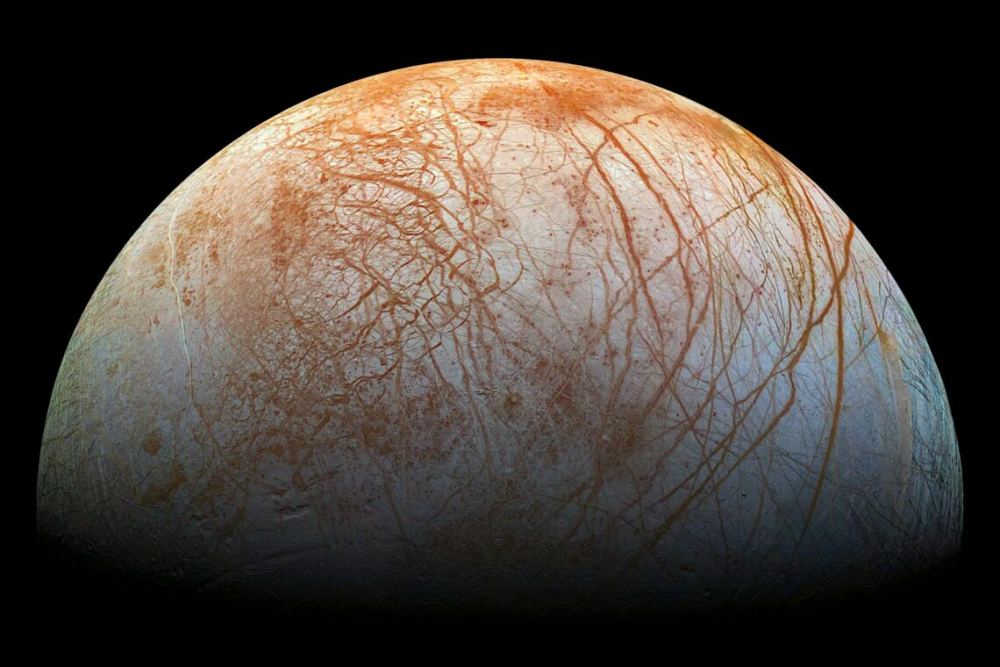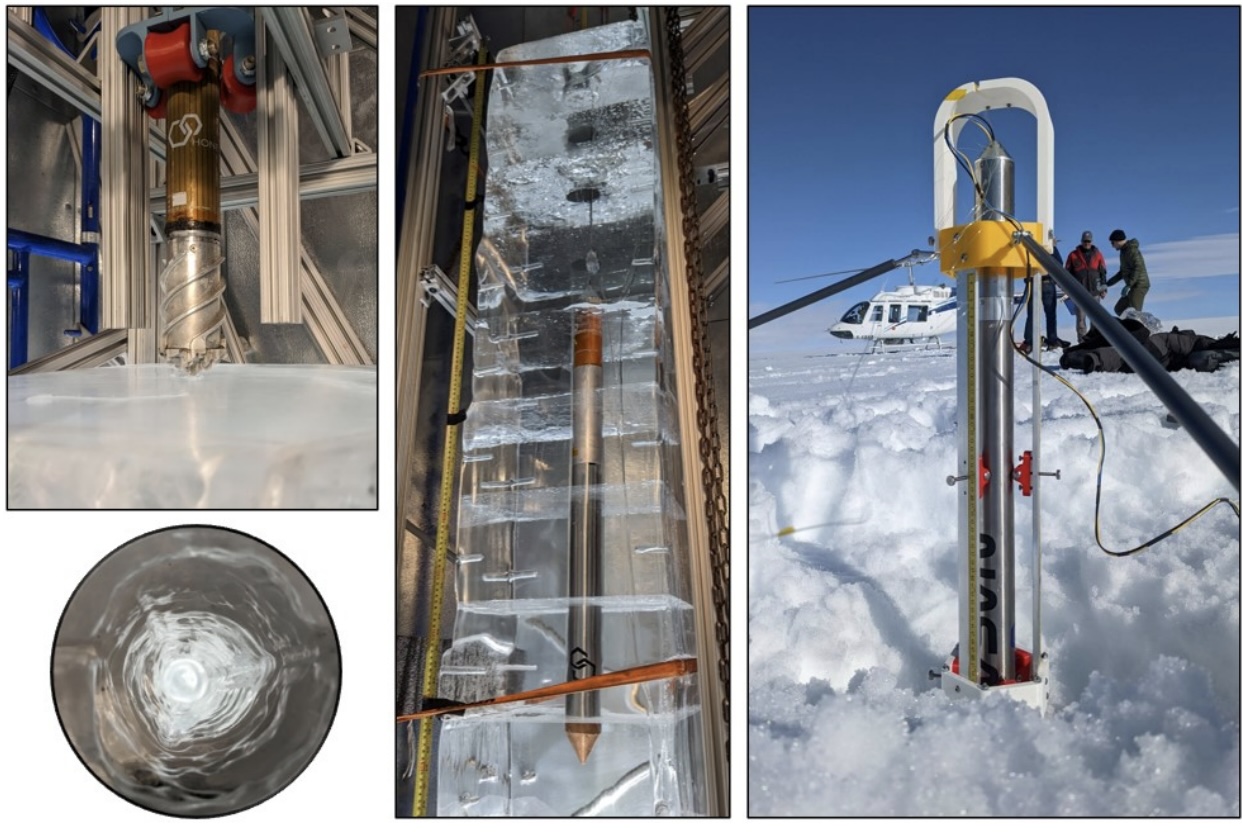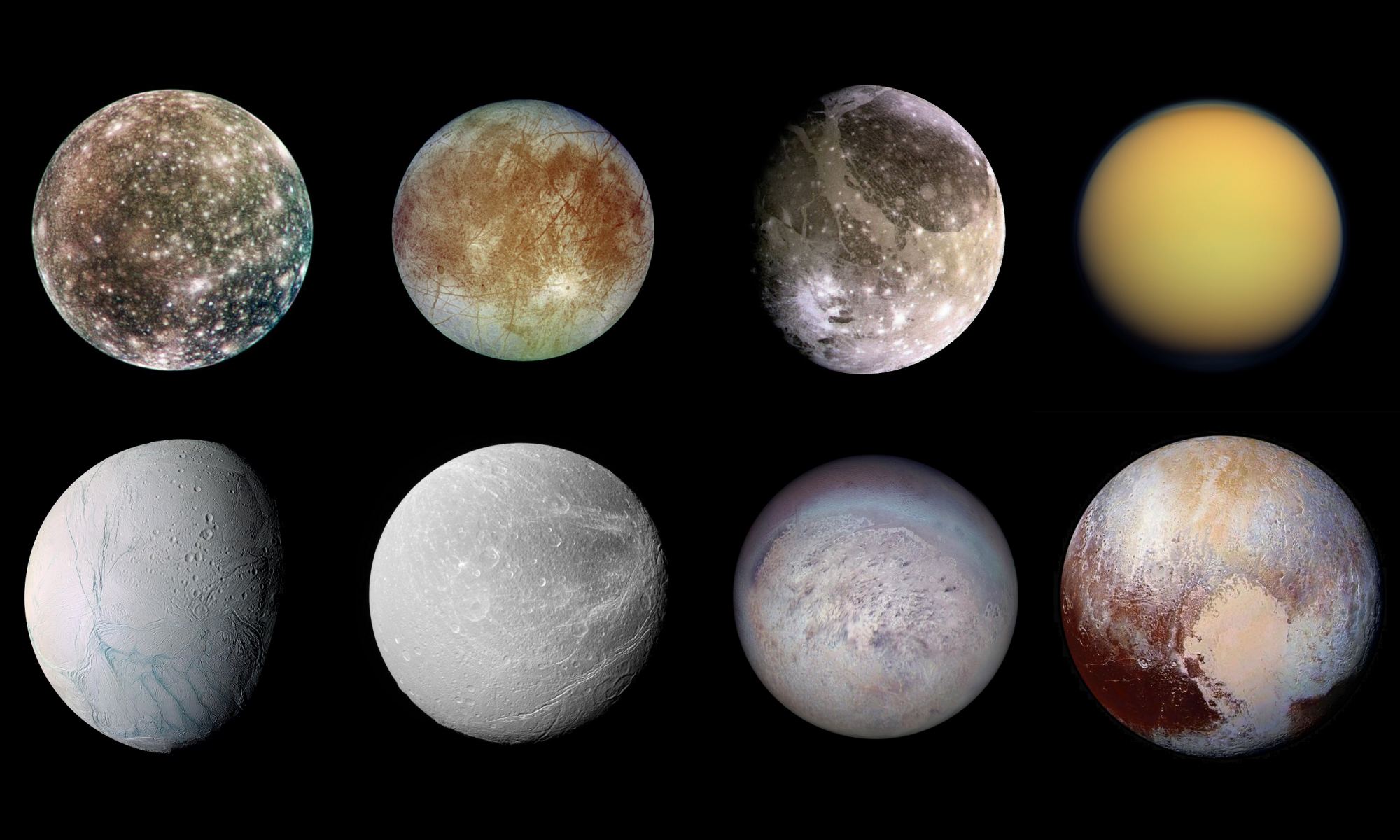Subsurface oceans of liquid water are a common feature of the moon’s of Jupiter and Saturn. Researchers are exploring whether the icy moons of Uranus and Neptune might have them as well. Their new paper suggests future missions to the outer Solar System could measure the rotation of the moons and detect any wobbles pointing to liquid oceans. Less wobble means the moons is mostly solid but large wobbles can indicate ice floating on an ocean of liquid.
Continue reading “Uranus’s Wobbling Moons Could Point to Oceans Under the Ice”Testing the Robots that Might Explore Europa

Europa, one of the four Galilean satellites of Jupiter is one of the most intriguing locations in the Solar System to search for life. However, its subsurface oceans are buried beneath thick layers of ice making exploration difficult. To explore its oceans, scientists have suggested using small swimming robots capable of penetrating the icy shell. Recently, NASA engineers tested prototypes designed to operate as a swarm, enabling them to explore the mysterious sub-ice oceans on Europa and other icy worlds in the Solar System.
Continue reading “Testing the Robots that Might Explore Europa”Europa Clipper Begins Odyssey to Assess Jovian Moon’s Habitability

NASA’s Europa Clipper spacecraft today began its six-year cruise to the Jupiter system, with the goal of determining whether one of the giant planet’s moons has the right stuff in the right setting for life.
The van-sized probe was sent into space from NASA’s Kennedy Space Center atop a SpaceX Falcon Heavy rocket at 12:06 p.m. ET (16:06 UTC). A little more than an hour after launch, the spacecraft separated from its launch vehicle to begin a roundabout journey of 1.8 billion miles (2.9 billion kilometers) from Earth orbit to Europa.
For decades, scientists have been collecting evidence that Europa harbors a hidden ocean of salty water beneath its icy shell. Or are they hidden lakes? Europa Clipper is built to characterize the moon’s surface, and what’s beneath that surface, to an unprecedented degree.
Continue reading “Europa Clipper Begins Odyssey to Assess Jovian Moon’s Habitability”Could Comets have Delivered the Building Blocks of Life to “Ocean Worlds” like Europa, Enceladus, and Titan too?
Throughout Earth’s history, the planet’s surface has been regularly impacted by comets, meteors, and the occasional large asteroid. While these events were often destructive, sometimes to the point of triggering a mass extinction, they may have also played an important role in the emergence of life on Earth. This is especially true of the Hadean Era (ca. 4.1 to 3.8 billion years ago) and the Late Heavy Bombardment, when Earth and other planets in the inner Solar System were impacted by a disproportionately high number of asteroids and comets.
These impactors are thought to have been how water was delivered to the inner Solar System and possibly the building blocks of life. But what of the many icy bodies in the outer Solar System, the natural satellites that orbit gas giants and have liquid water oceans in their interiors (i.e., Europa, Enceladus, Titan, and others)? According to a recent study led by researchers from Johns Hopkins University, impact events on these “Ocean Worlds” could have significantly contributed to surface and subsurface chemistry that could have led to the emergence of life.
Continue reading “Could Comets have Delivered the Building Blocks of Life to “Ocean Worlds” like Europa, Enceladus, and Titan too?”Dark Oxygen Could Change Our Understanding of Habitability

The discovery of dark oxygen at an abyssal plain on the ocean floor generated a lot of interest. Could this oxygen source support life in the ocean depths? And if it can, what does that mean for places like Enceladus and Europa?
What does it mean for our notion of habitability?
Continue reading “Dark Oxygen Could Change Our Understanding of Habitability”Planetary Protection: Why study it? What can it teach us about finding life beyond Earth?
Universe Today has recently investigated a plethora of scientific disciplines, including impact craters, planetary surfaces, exoplanets, astrobiology, solar physics, comets, planetary atmospheres, planetary geophysics, cosmochemistry, meteorites, radio astronomy, extremophiles, organic chemistry, black holes, and cryovolcanism, while conveying their importance of how each of them continues to teach researchers and the public about our place in the vast universe.
Continue reading “Planetary Protection: Why study it? What can it teach us about finding life beyond Earth?”Cryovolcanism: Why study it? What can it teach us about finding life beyond Earth?

Universe Today has had the privilege of spending the last several months venturing into a multitude of scientific disciplines, including impact craters, planetary surfaces, exoplanets, astrobiology, solar physics, comets, planetary atmospheres, planetary geophysics, cosmochemistry, meteorites, radio astronomy, extremophiles, organic chemistry, and black holes, and their importance in helping teach scientists and the public about our place in the cosmos.
Continue reading “Cryovolcanism: Why study it? What can it teach us about finding life beyond Earth?”Juno Reveals Secrets About Europa’s Icy Surface
Europa has always held a fascination to me. I think it’s the concept of a world with a sub-surface ocean and the possibility of life that has inspired me and many others. In September 2022, NASAs Juno spacecraft made a flyby, coming within 355 kilometres of the surface. Since the encounter, scientists have been exploring the images and have identified regions where brine may have bubbled to the surface. Other images revealed possible, previously unidentified steep-walled depressions up to 50km wide, this could be caused by a free-floating ocean!
Continue reading “Juno Reveals Secrets About Europa’s Icy Surface”If Europa has Geysers, They’re Very Faint

In 2013, the Hubble Space Telescope spotted water vapour on Jupiter’s moon Europa. The vapour was evidence of plumes similar to the ones on Saturn’s moon Enceladus. That, and other compelling evidence, showed that the moon has an ocean. That led to speculation that the ocean could harbour life.
But the ocean is obscured under a thick, global layer of ice, making the plumes our only way of examining the ocean. The plumes are so difficult to detect they haven’t been confirmed.
Continue reading “If Europa has Geysers, They’re Very Faint”Testing a Probe that Could Drill into an Ice World

I remember reading about an audacious mission to endeavour to drill through the surface ice of Europa, drop in a submersible and explore the depths below. Now that concept may be taking a step closer to reality with researchers working on technology to do just that. Worlds like Europa are high on the list for exploration due to their potential to harbour life. If technology like the SLUSH probe (Search for Life Using Submersible Head) work then we are well on the way to realising that dream.
Continue reading “Testing a Probe that Could Drill into an Ice World”



